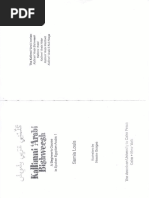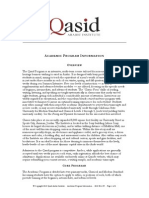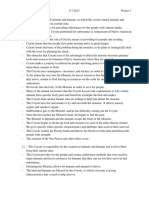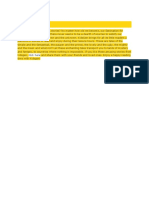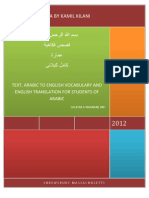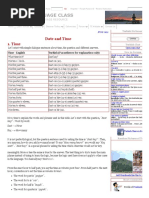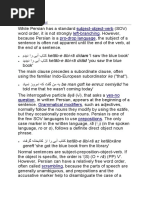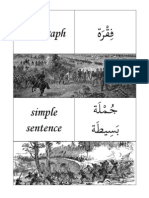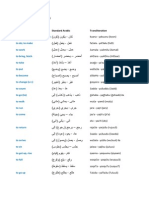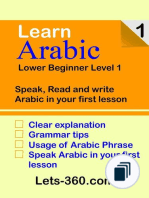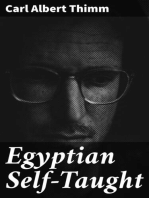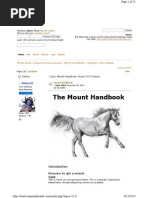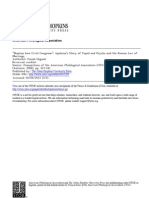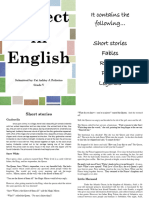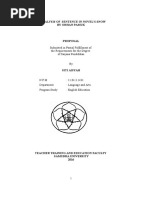Medina Book 1 Translated Notes
Medina Book 1 Translated Notes
Uploaded by
Ahmed KhanCopyright:
Available Formats
Medina Book 1 Translated Notes
Medina Book 1 Translated Notes
Uploaded by
Ahmed KhanCopyright
Available Formats
Share this document
Did you find this document useful?
Is this content inappropriate?
Copyright:
Available Formats
Medina Book 1 Translated Notes
Medina Book 1 Translated Notes
Uploaded by
Ahmed KhanCopyright:
Available Formats
~|,l| ~|,l| ~|,l| ~|,l|
,,\| ~|.ll ,,\| ~|.ll ,,\| ~|.ll ,,\| ~|.ll
,,,l.| sll|, ,>l| ,,,l.| sll|, ,>l| ,,,l.| sll|, ,>l| ,,,l.| sll|, ,>l|
The Rules for Book 1
With an explanation in the
English language
| l, |,l| ,.
,l, ,| l~ |l. ,,|
~|, | ,
Written by Abu Salmaan Talha ibnu William
Translated by Umm Mujaahid
2
,=, ,,>_\l \=>_\l =l
)
_\=]l
s\=
=vl (
Demonstrative Pronouns
'.=
.=
_'.=
_'.'=
..
= ,,
\.
=\
.'.
.'.
.\' .,
,\\
The
'=,'
.'=
=.' ,demonstrative pronouns are similar to the English that , this
and they are of two types; ,,
\ for things which are close, and .,
,\\ for things at
a distance. Unlike in English, demonstrative pronouns in Arabic have a different form
for singular, dual, and plural, and they also change to correspond to the gender of the
noun. So if the noun is feminine then the demonstrative pronoun is also feminine,
however there are a few exceptions to this rule, as indicated below.
3
The demonstrative pronouns (for near):
_'.
_'.'=
..
=
The demonstrative pronouns (for far):
\.
=\
.'.
.'.
.\'
-\
.=' Examples
l.=
'.= This is (for masculine singular)
These are (for dual masculine)
These are (for dual feminine)
These are (for plural masculine or feminine)
This is (for feminine singular or plural irrational)
,,
\
for things which are
near
.,
,\\
for things which
are far
That is (for masculine singular)
That is (for feminine singular or plural irrational)
Those are (for dual masculine)
Those are (for dual feminine)
Those are (for plural masculine or feminine)
l.=
,'.
> l.=
) .
>.
=\\ -
'=
= ( ) .
>.
=\\ -
'= (
This is a man This is a book
(for masculine singular-rational) (for masculine singular-irrational)
4
.=
l.=
\.\=
.=
'` ,
.=
'
=}
)
..
=\\ .
= -
'= ( )
..
=\\ .
= -
'= (
This is a woman This is a car
(For feminine singular-rational) (For feminine singular-irrational)
l.= _'=\
l.=
_'=
\'
=
)
>.
=\\
= -
'=
= ) (
>.
=\\
= -
'= (
These are scholars These are pens
(For masculine dual-rational) (For masculine dual-irrational)
\.\=
_'.
, \.\=
_'.
=
) _
..
=\\ -
'=
= ) (
..
=\\ _
= -
'= (
These are Muslims These are cows
(For feminine dual-rational) (For feminine dual-irrational)
5
sv
\.
sv
= sv
.'=
=
) _
>.
=\\ -
'= ) ( _
..
=\\ -
'= (
These are Muslims These are Muslims
(For feminine plural-rational) (For masculine plural-rational)
'=,
\.
>
'.
..
.'=
> ,\ '.=
..
= is likewise allowed for irrational (nouns) but this is rare. For
example:
..
.'=
>
These words
\.
\. _
=
) .
>.
=\\ -
'=
= ( ) .
>.
=\\ -
'= (
That is engineer That is a star
(for masculine singular-rational) (for masculine singular-irrational)
6
.l.
=\
=`
=\
=
`
=
)
=.
=\\ .
= -
_,
\= ( )
=.
=\\ .
= -
\= (
That is a nurse That is a fridge
(For feminine singular-rational) (For feminine singular-irrational)
\.
>
=\
. )
'=
= ( ,
.
`
.\' _
'=
> }
=\
=` \' ( '.=
,\
=\
. is like wise allowed for plural rational like what is in the
revelation, (those messengers) but this is rare.
.l.
_'
.l.
_'=
`
`
>.
=\\
= -
'=
= ( )
>.
=\\
= -
'= (
Those are farmers Those are notebooks
(For masculine dual-rational) (For masculine dual-irrational)
7
.\.
.\l
=
.\.
_'.
.\.
_'.
=
`
=
) _
..
=\\ -
'=
= ) (
..
=\\ _
= -
'= (
Those are teachers Those are rulers
(For feminine dual-rational) (For feminine dual-irrational)
.\l
.\l
.'=
=
) _
>.
=\\ -
'= ) ( _
..
=\\ - '=
(
Those are Muslims Those are Muslims
(For feminine plural-rational) (For masculine plural-
rational)
_\'=
'=
>
'=
\'.
>
} \' ` _}
,\'
=` =
`
>
.'
\'
.\'
_'
> (
.\' Is likewise allowed for irrational (nouns) like what is in
the speech of The Most High: (translated meaning)
(Verily the hearing and the sight and the heart, of each of those
you will be questioned)
8
)
-,
=\
=\
= (
Possessed and possessor
-\
.='
'.
>
='=
. '.
> \'
,
`
-,
\} '=
= '=
-,
\} '=
= '=
=
Possessor Possessed Possessor Possessed
)
: With alif and laam (
Examples
The teachers
book
Haamids book
To show belonging in Arabic we use the possessive construction. This
consists of two parts. The possessed '
= , which appears first and
the possessor '
-,
\} , which follows straight after. The '
=
takes a damma, depending on its function in a sentence and the '
-,
\}
takes a kasra. It is important to note that the '
= can never take an
alif or laam or a tanween whereas the '
-,
\} can do so.
9
,.
\'
,
)
= (
Adjective and qualifying noun
'.
=
\'
, \'
=
Adjective qualifying noun Adjective qualifying noun
(Without alif and laam) (With alif and laam)
Example
A new house
The new house
,.
\' _
,
The adjective in Arabic follows the noun it qualifies, unlike in English it
comes after the noun. The adjective in Arabic is called the
. and the
noun it qualifies is referred to as the
= (the qualifying noun). The
.
. follows the
= in its gender (masculine and feminine), in its
definite and indefiniteness, and like wise in its case.
10
) \l
sl.
.\l
> _
.\.
= (
The Vocative particle
and the Addressed
'.= \,
=',
_.'.
=\'
.'.` .\'
=
The
Vocative
Particle
The
Addressed
To call upon someone in Arabic you use the vocative particle
.'.` .\' ,
which is ', , equivalent to the English oh. The noun that comes after it is
called the _
.'.
=\' (the addressed), and it takes a single damma
regardless of gender.
Oh Yaasir!
11
)
\l
> (
The Genitive prepositions
(
The Genitive prepositions are:
= _
,
_\}
For (used for belonging)
In
On
From
To
By/at
_\
, _\}
Arabic nouns have endings to show their function in a sentence. The normal
ending of a noun is
damma, and the case of it is called _
=
(Nominative). However, when the noun is proceeded by any of the
=
`
=\' (genitive prepositions) it changes to a kasra and its case is no longer
_
= (Nominative) instead it becomes (Genitive).
12
Examples:
'.=
_
'.
=
_\
= '.
= '.=
, '.=
_\} '.=
The watch is on the desk
Zaynab is from Japan.
Haamid went to the masjid
I am a student at the university
This book is for Muhammad
The teacher is in the class.
_
`
=\' _
\'
='` =\' _\= .
>
=\'
= ',',\'
='=
. _\
=\'
\'= '.'
='=\'
,'.
>\' '.=
\
`
=
.
13
}
{
:
=\' _
>,
=' _
= _
` ,
>
'
_
.'=\'
:
_
=\' _ _\} >,
=' _ \
= _
The hospital
America
Musa
Zakariyya
Germany
.'
='
` ,
, `
The end case of the noun
does not change
for Musa to America in the hospital
A noun which is ismul maqsoor, has an aa sound ending. The ending
vowels of these nouns remain constant, despite their change in
function. For example, if they are preceded by a genitive preposition
(Harful Jarr), which would cause them to take a kasra, they remain
unaffected.
14
} -
=\l
s\=
=vl {
The Relative pronouns are (for masculine):
.
The Relative pronouns
_
.
`
\' Who/which (for singular masculine rational and irrational)
_
.
`
\' Who/which (for singular feminine rational and plural masculine
and feminine irrational)
Who/which (for dual masculine rational and irrational) _'.
`
\'
Who (for plural masculine rational only) :
_,
.
`
\'
`
>
=\
\
For masculine
_
.
`
\' _'.
`
\' _,
.
`
\'
`
>
=\
\
_
.
`
\' _'.
`
\'
`
.' ' _
.
`
.' _
.` .
=\
\
The Relative pronouns, -
=\'
.'=
=.' have the meaning of which, who,
and differ in their form to correspond to the correct gender. They also
differ to correspond to the singular, dual and plural noun. Note that the
pronoun _
.
`
\' is also used for plural irrational nouns (ghayru aaqilin). Objects,
animals and concepts are classified as irrational nouns whilst rational include;
humans, angels and devils.
15
: Example
_
.
`
\'
_
.
`
\' :
_
.
`
.' ' _
.
`
.' Who (for plural feminine rational only)
_'.
`
\' Who/which (for dual feminine rational and irrational)
\' .\l
='.
=\'
=
The man who left the masjid is a famous merchant.
For masculine singular rational
)
`
>
= '= (
,'.
>\' .\l
_
`
=\
>
=\' _\
=
The book, which is on the desk, belongs to the teacher.
For masculine singular irrational
)
`
>
= '=
= (
.` .
=\
\
For feminine
16
_'.
`
\' :
.\' :
_'=
`
=\'
l.
\l
_'.
\' _\} ',
.
The teachers who went to the classroom, are new.
For masculine dual rational
)
`
>
= _` .
= '= (
_'=
\'
l.\l
_'=,
= _
The pens, which are in my bag, are old.
For masculine dual irrational
)
`
>
= _` .
= '=
= (
=\' l
.\ ',
>
=\'
= '
=
The engineers who left the restaurant are from
Turkey.
For masculine plural rational
)
`
>.
'= (
17
_
\' :
'
=\' _
\l
=\' _\}
.
The woman who went to the school is a
headmistress
For feminine singular rational
)
.` .
'= (
=\'
\l _
.
`
=
>
=\' _\=
The ruler, which is on the desk, belongs to Muhammad.
For feminine singular irrational
)
.` .
= '=
= (
.
The donkeys, which are in the field, belong to the
farmer.
For masculine plural irrational
)
. (
18
_'.
\' :
_
.
`
.' :
_'.
'` ,` =\'
\.
\l
=\'
,'='
The cars, which are in front of the masjid, belong to
the minister.
For feminine dual irrational
)
.` .
_` .
'=
= (
_'.
\'
`
=\' \.
\l _
>
.}
=\'
= '.
The students, who left from the school, are from
England.
For feminine dual rational
)
.` .
= _` .
'= (
.'=
=\' _
vl \}
.'=
`
` =\' _
',
.'=\'
The Muslims who went to the market, are teachers from
Germany.
For feminine plural rational
)
.` .
'= (
19
.'=
=\' _
vl
.'=
`
` =\' _\} _
.
',
.'=\'
The Muslims who went to the market, are teachers from
Germany.
For feminine plural rational
'=
20
}
{
The laam of definiteness
: Example
, '.=
. '.= \'
=
`
.\'
,.
This house This is a house
(The laam of definiteness)
A noun that has tanween, the indefinite article, is referred to as
indefinite. The Tanween is the double vowel that you find at the end of a
noun (look at the first example below). Its equivalent in English is A. In
Arabic to make a noun definite we add on the alif and laam. The laam here
is called the
=
`
.\'
,. ,laam of definiteness.
21
}
{
The detached pronouns
They are:
We
. I
'.'
>
=
We are students
) _` .
= (
For plural or dual
\.l
\'=
,
I am a student
)
= (
: For first person (masculine or feminine) _
=
`
\
>
=\
\
'.' _
. .
.' . '=
.' . ,
.' '=
.'
.'
` _
.'
= '=
= ,
= _
= '=
= ` _
=
Pronouns are of two main categories:
-\
=\'
.'=` =\' , the detached
pronouns and
=
`
.
=\'
.'=` =\' ,the attached pronouns. The pronouns
in this category are detached pronouns. Detached pronouns give the
meaning he she they etc and even it. They are divided into 3 types:
for first person, second person, and third person, in each of these
categories they differ in form. Please note unlike in English, pronouns
in Arabic have a different form for dual and plural.
22
You (plural) ,
.' (dual) You '=
.' (singular) You
.'
'.
=
You (plural) ` _
.' (dual) You '=
.' You (singular)
.'
'.
=
\=
.l
_',
\'=
You are students
) _` .
= (
For masculine dual
.l
\'=
You are a student
)
= (
For masculine singular
,
.l
=
You are students
)
= (
For masculine plural
.l \=
_'.
\'=
You are students
) _` .
= .` .
= (
For feminine dual
.l
\'=
You are a student
)
= .` .
= (
For feminine singular
.l
.',
\'=
You are students
)
= .` .
= (
For feminine plural
_
='=
=\
\ : For Second person (masculine)
: For second person (feminine) .',
='=
=\
\
23
They (plural) ,
= (dual) They '=
= He (singular)
'.
=
They (plural) ` _
= (dual) They '=
= He (singular) _
'.
=
For third person (masculine)
_,
.'=\
\
\=
_',
\'=
They are students
) _` .
= (
For masculine dual
\'=
He is a student
)
= (
For masculine singular
,
=
They are
students
)
= (
For masculine plural
For third person (feminine)
\=
= '.
\'=
_
They are students
) _` .
= (
For feminine dual
\'=
She is a student
)
= (
For feminine singular
.',
\'=
They are
students
)
= (
For feminine plural
24
}
{
The attached pronouns
'.= :
=
`
\
>
=\
\
'.
,'.
> '.
Our book
)
.` .
>
= _
= (
Masculine and feminine
plural and dual
,'.
> _
My book
)
.` .
>
= (
Masculine and feminine
singular
'. _
= '=
> ,
>
= '=
> ` _
>
'=
= ,
= '= '=
= ` _
=
As mentioned earlier Pronouns are of two categories: The Detached
Pronouns and the Attached Pronouns. The category mentioned here is
that of Attached Pronouns. Similarly Attached Pronouns are divided
into 3 types: for first person, second person, and third person and
within these categories they differ in form. The pronouns once again
have a different form for dual and plural.
25
'.= :
'.= :
_
='=
=\
.',
='=
=\
\
'=
>
,'.
> '=
>
Your book
)
.` .
`
>
= _` .
= (
Masculine and feminine
dual
,'.
> =
Your book
)
>
(
Masculine singular
,'.
> ,
>
Your book
)
`
>
= (
Masculine plural
,
>
,
>
,'.
> '=
>
Your book
)
.` .
`
>
= _` .
= (
For masculine and
feminine dual
,'.
>
=
Your book
) .` .
= (
For feminine singular
,'.
> ` _
>
Your book
) .` .
= (
For feminine plural
` _
>
26
:
'.= :
_,
.'=\
.',
.'=\
\
'=
,'.
> '=
,
Their book
)
`
>
= _` .
= (
For masculine dual
,'.
>
-
His book
)
>
= (
For masculine singular
,'.
> ,
,
Their book
)
`
>
_ (
For masculine plural
,
=
'=
=
'=
,'.
> '=
,
Their book
)
.` .
`
>
= _` .
= (
For masculine and
Feminine dual
,'.
= ',
Her book
) .` .
= (
For feminine singular
,'.
> ` _
,
Their book
) .` .
= (
For feminine plural
` _
=
27
}
{
The kam of interrogation
and its specification
'.
= Example
=
>
'
>
='`
`
.\
'=
.'
. ,
>
\'
= .
.'.
'=
=.'
_'
> '.}
=\'
How many wheels
belong to the bike?
How many pens do
you have?
The tamyeez (distinctive term) of kam is always singular.
It is ended with an alif, except when the noun ends with
the taa marboota (a closed taa)
The kam of
Interrogation
-` ,
=',
=} ,
>
Its
specification
. '=
Its
specification
'=
.
The kam of
Interrogation
-` ,
=',
=} ,
>
Kam of interrogation comes before a noun and it is used for questioning. It gives
the meaning how much/many. The noun that comes after it is called its tamyeez
(specification) and it is always singular and takes the mansoob case (Accusative
case). Please look at the example below.
28
vl \
Verbs
)
.\
.\l
s\. (
The taa of feminine form
'.=
\' _
\'
`
=\'
,\'
=
`
,.'
The mother left the
house
The student sat in the
classroom
Arabic verbs have a root, similar to English. Verbs are normally made up
of three letters knows as radicals. To make a verb represent the past
tense certain letters are added at the end of the root (look at the
examples below). The
.'.
.'
`
.\'
, is used to conjugate a verb to make it
past tense, singular feminine third person. The
=` .\' is used to
conjugate a verb to make it past tense, plural feminine third person.
Finally, the
'
='=
=\' is used to conjugate a verb so that it
represents past tense, plural masculine third person. Please note these
are just a few of the conjugated verbs.
29
)
.\l
. (
The noon of women form
'.=
.'=` .\'
=\' _\}
.'=
`
=\'
_ _
=\'
=
)
=\=
\l (
The waw of group form
'.=
'=
`
\'
=\' _\} '
_' ` =
=\'
-
`
>
= '
The (female pl.)
nurses left the
hospital
The women (pl.) went
to the masjid
The pilgrims (male
pl.) returned from
Mecca
The men (pl.) went to
the school
Example
30
)
\l .
=\l
(
The number and the enumerated
)
= _\} -
.`
= (
From 3 to 10
:
3 Female students
to 1
3 Male students
.',
\'=
.`
=\'
=\'
The enumerated
(Feminine
.` .
= - )
The enumerated
(Masculine
`
>
= - )
.`
=\'
=\'
The number
The number
In Arabic, to construct a number two things are included; the
=\' (the number)
and the
=\' (the enumerated). The noun, which denotes the thing numbered, is
called
=\l and the number is called the
=\'. Unlike in English, Arabic numbers
can be feminine or masculine. With regards to the numbers 3 to 10, if the
=\l
is feminine the
=\' is masculine and if the
=\' is masculine the
=\' is
feminine (opposites come together). Also the numbers from 3 to 10 follow the
mudaaf and mudaafun ilaihi construction.
31
'.
`
.
=\'
>
'
`
>
=\'
_'> '.} '.
`
.
=\'
_'> '.}
'
`
>
=\'
>
_,
\'.
=\' _
_` =
= '=>
`
>
=\'
=\\
When the enumerated is masculine then the number is feminine, and
when the enumerated is feminine then the number is masculine, like
what is clear in the two examples (above).
.`
'
-
`
.
= .
) ( ) ( ) (
Five students
then the
Four students
then the
Three students
.'=
.
) (
) (
) (
Eight students Seven students
Six students
) ( ) (
Ten students Nine students
For the masculine enumerated
32
.
`
.
=\'
=\\
.',
\'=
..
.',
\'=
'
`
.
.',
\'=
.',
\'=
) ( ) ( ) (
Five students
then the
Four students
then the
Three students
.',
\'=
.',
\'=
.',
\'= _.'=
.',
\'=
.
) (
) (
) (
Eight students Seven students
Six students
) ( ) (
Ten students Nine students
For the feminine enumerated
33
)
\l
=\l (
The Diptotes
_
.,
= ` ,
, .
` =\'
=\' '=
_,
.
`
.\' (
>\' (
The Diptotes do not like two things, and they are nunation and the kasra
'.
'.
=\'
_\}
'.=\' _
_
To Zaynab
In the schools
From London
The Diptotes are nouns that do not take a single kasra nor do they take a
Tanween (double vowel), which can be of: dammataan , fathataan and
kasrataan . So it is important to understand that if a diptote is in a
sentence where it is supposed to take a kasra, it does not do so, rather it is
substituted with a fatha. (Please look to the examples below)
34
` =\'
=\'
..'
_'
..'
:
:
The following examples are from the diptotes:
A feminine proper noun designated for the
masculine
)
`
>
=\' _
`
=
=\
.` .
= (
= '
='=
'=
=
Talha Muaawiya Usaama Hamza
Feminine proper nouns
)
.` .
=\'
=\' (
='
.'=
-
`
>
`
.
=
Jeddah Mecca Aaishah Faatima Zaynab
35
:
:
:
',
.}
Yuusuf Paris London Edward William
Masculine nouns, ending with aalif and noon on the
scale of falaan
)
`
>
=\'
=\'
\' _\
\'
>
(
The foreign proper nouns
)
=\' _
=.' (
_'=
_'
`
_',
_'
=
Marwaan Sufyaan Affaan Uthmaan
The proper nouns on the scale of afalu
)
=\'
\' _\
' (
.'
='
Anwar Ahmad
36
:
:
:
>' _
='
,'
='
='
='
'
better greater blue yellow red black white
Adjective and colour on the scale of afalu
)
\' _\=
' (
_`
_'=
_'==
_`
>
full thirsty hungary lazy
Adjective on the scale of falaan
)
= ' _\
>
='
.',
='
.'` ,
='
.',
'
.'
.
doctors strongones truthful ones rich ones
pl. pl. pl. pl.
on the scale of afilaau
)
\' _\=
s>
l (
37
:
:
:
=\'
`
,
.'
.'=
.`
.'
scholars colleagues ministers poor ones
pl. pl. pl. pl.
On the scale of fualaau
)
\' _\=
s>
='=
'.
.'.
.'>
= '
.
minutes doctors hotels schools mosques
pl. pl. pl. pl. pl.
on the scale of mafaailu
)
\' _\=
=\
= (
.'
.'.
=
`
_
='
>
='.
chairs cups keys handkerchiefs
pl. pl. pl. pl.
on the scale of mafaaeelu
)
\' _\=
=\
= (
You might also like
- Big Fat Book of Egyptian Arabic Verbs Lingualism 7tov9sDocument550 pagesBig Fat Book of Egyptian Arabic Verbs Lingualism 7tov9staniaNo ratings yet
- No No Boy PDFDocument36 pagesNo No Boy PDFSusila GajurelNo ratings yet
- The Chicago Folios PDFDocument177 pagesThe Chicago Folios PDFДаня100% (6)
- I Love Arabic For BeginnersDocument69 pagesI Love Arabic For BeginnersMukundNo ratings yet
- Arabic AdverbsDocument4 pagesArabic AdverbsrashaxNo ratings yet
- Kallimni Arabi BishweeshDocument132 pagesKallimni Arabi Bishweeshfrodlla100% (1)
- Fractured Fairytales Kit 3-5 60629Document11 pagesFractured Fairytales Kit 3-5 60629api-2878714640% (1)
- Arabic Vocabulary NotebookDocument3 pagesArabic Vocabulary Notebookkauthar86No ratings yet
- Lisaan Ul Quran Vol.1 - Vocabulary ALPHABETICALDocument24 pagesLisaan Ul Quran Vol.1 - Vocabulary ALPHABETICALNazya TajNo ratings yet
- Stories JuhaDocument17 pagesStories JuhaUmer KhayemNo ratings yet
- Letter by Letter Abu Taubah S Arabic Alphabet WorkbookDocument2 pagesLetter by Letter Abu Taubah S Arabic Alphabet WorkbookSharief SkNo ratings yet
- Arabic WritingDocument42 pagesArabic WritingnasirsurgNo ratings yet
- Qasid Institute Program OverviewDocument41 pagesQasid Institute Program OverviewcoldplaylionNo ratings yet
- Arabic Language Course - Lesson 1 - Part 1 - This IsDocument4 pagesArabic Language Course - Lesson 1 - Part 1 - This IsHussainNo ratings yet
- Learn Mandarin Chinese: Most Popular Chinese Tales With AnimalsDocument65 pagesLearn Mandarin Chinese: Most Popular Chinese Tales With AnimalseChineseLearning100% (9)
- Historical NovelDocument8 pagesHistorical Novelorigin_0375% (4)
- Harry Potter Prequel Series 1Document405 pagesHarry Potter Prequel Series 1Edwin Huang50% (2)
- Nez PerceDocument2 pagesNez Perceirc32393No ratings yet
- Egyptian Arabic Lesson 1Document4 pagesEgyptian Arabic Lesson 1Paul SullivanNo ratings yet
- BodyDocument1 pageBodyMaranello Rosso100% (1)
- Arabic4 Basics On Al Idaafa PDFDocument12 pagesArabic4 Basics On Al Idaafa PDFFahirCan0% (1)
- Arabic StoriesDocument1 pageArabic StoriesAbinayaHemaRajNo ratings yet
- The Significance and Priority Placed On MemorizingDocument6 pagesThe Significance and Priority Placed On MemorizingNasrin Akther100% (1)
- How To LEARN ARABIC MSADocument6 pagesHow To LEARN ARABIC MSAMohammad PalekarNo ratings yet
- Arabic Connection WordsDocument3 pagesArabic Connection Words鄺豪傑 Dr. Jacky Kwong Ho-Kit50% (2)
- 4 - RR Without Translit5 - QURAANIC ARABIC (WORDPRESS)Document40 pages4 - RR Without Translit5 - QURAANIC ARABIC (WORDPRESS)Al HudaNo ratings yet
- Story of Ummara-Kamil KailaniDocument22 pagesStory of Ummara-Kamil KailaniskhananiNo ratings yet
- The Day of A Rafah Falling On A FridayDocument4 pagesThe Day of A Rafah Falling On A FridayNasrin AktherNo ratings yet
- Unit 6 Conversation Between: Two FriendsDocument16 pagesUnit 6 Conversation Between: Two FriendsSadman Sakib KhanNo ratings yet
- ةثداحملا The conversations: The Islamic institutions for educationDocument13 pagesةثداحملا The conversations: The Islamic institutions for educationFxwirelessNo ratings yet
- Nahw - L2Document15 pagesNahw - L2drmuhsinNo ratings yet
- الأفعال الشاذة بترتيب مختلفDocument7 pagesالأفعال الشاذة بترتيب مختلفدكتور فاروقNo ratings yet
- The Grammatic Rules in "Lessons in Arabic Language - Book 1"Document39 pagesThe Grammatic Rules in "Lessons in Arabic Language - Book 1"alquran.se100% (5)
- Story of Tanbori's Shoes-Kamil KailaniDocument60 pagesStory of Tanbori's Shoes-Kamil KailaniskhananiNo ratings yet
- Egyptian Arabic Lesson 9Document4 pagesEgyptian Arabic Lesson 9Paul SullivanNo ratings yet
- Arabic Grammar LessonsDocument80 pagesArabic Grammar LessonsBecky BeckumNo ratings yet
- Iraqi Vs Emirati ArabicDocument10 pagesIraqi Vs Emirati ArabicAdhitiya Chandra MaasNo ratings yet
- 8th Class Arabic Book Textbook Board LahoreDocument173 pages8th Class Arabic Book Textbook Board LahoreAli0% (3)
- MasdarDocument3 pagesMasdarAasim YousufNo ratings yet
- Madina Arabic 2Document78 pagesMadina Arabic 2Ehtisham HaiderNo ratings yet
- Talat Rafi Raza KhanDocument10 pagesTalat Rafi Raza Khan123prayer100% (1)
- Arabic Pronouns Attached We Final PDFDocument1 pageArabic Pronouns Attached We Final PDFmanouche123No ratings yet
- Arabic BookDocument10 pagesArabic Bookshaficbbaale96No ratings yet
- ? MSA - Modern Standard Arabic Videos - ?level 1?Document4 pages? MSA - Modern Standard Arabic Videos - ?level 1?ahmedauro2022No ratings yet
- Lesson 1.1 Greetings in Arabic LessonDocument52 pagesLesson 1.1 Greetings in Arabic LessonHaino JaberNo ratings yet
- Arabic Verbs 4Document1 pageArabic Verbs 4Al HudaNo ratings yet
- 6 Date and Time - Turkish Language LessonsDocument5 pages6 Date and Time - Turkish Language LessonsAlongMXNo ratings yet
- Egyptian Arabic Lesson 11 Isn't there one bigger than this?: Vocabulary تادﺮﻔﳌاDocument6 pagesEgyptian Arabic Lesson 11 Isn't there one bigger than this?: Vocabulary تادﺮﻔﳌاfabianamarNo ratings yet
- Voice System in English and Arabic - Mohammed RefaatDocument11 pagesVoice System in English and Arabic - Mohammed RefaatMohammed Refaat0% (1)
- Persia Grammar ImmportantDocument15 pagesPersia Grammar ImmportantjensNo ratings yet
- The Camping - 4th Dialog of 2nd Chapter of Alarabiya Bayna Yadayk Vol 2Document1 pageThe Camping - 4th Dialog of 2nd Chapter of Alarabiya Bayna Yadayk Vol 2Nasrin Akther100% (1)
- Á Hîdg Iqgrh: Áq °ùfƒqàdg Áqjqƒ¡ ÷GDocument168 pagesÁ Hîdg Iqgrh: Áq °ùfƒqàdg Áqjqƒ¡ ÷GChaabane BOUALINo ratings yet
- Answers For Lesson 10: Qur'aanic Arabic Understand The Qur'aanDocument17 pagesAnswers For Lesson 10: Qur'aanic Arabic Understand The Qur'aanmanouche123No ratings yet
- INTRODUCTION To Learning The Language of QuranDocument5 pagesINTRODUCTION To Learning The Language of QuranIsmail ThaniyullathilNo ratings yet
- Joining Letters of Arabic - Google SearchDocument1 pageJoining Letters of Arabic - Google SearchSadaf RizviNo ratings yet
- Arabic Grammar Terms 2Document13 pagesArabic Grammar Terms 2Kate Qazi100% (3)
- A-Pdf Merger Demo A-Pdf Merger Demo: Imperfect Tense Past TenseDocument33 pagesA-Pdf Merger Demo A-Pdf Merger Demo: Imperfect Tense Past Tenseapi-19708996No ratings yet
- Arabic Basic Verbs PDFDocument5 pagesArabic Basic Verbs PDFgavinmNo ratings yet
- Madina Book2 Notes PDFDocument76 pagesMadina Book2 Notes PDFims_design100% (1)
- ArabicDocument12 pagesArabicmohammedabd123100% (1)
- Arabic Verb FormsDocument4 pagesArabic Verb FormsRihane El AlaouiNo ratings yet
- Zero Arabic Grammar 2, Lower Arabic Beginner Course: Arabic Linguistic Course, #2From EverandZero Arabic Grammar 2, Lower Arabic Beginner Course: Arabic Linguistic Course, #2No ratings yet
- Alpha Chronicles - Core Rules PDFDocument331 pagesAlpha Chronicles - Core Rules PDFCharles WestonNo ratings yet
- Electrolux ServiceDocument3 pagesElectrolux ServiceaaaNo ratings yet
- Inversions VictorDocument4 pagesInversions VictorVíctor BLNo ratings yet
- Gr12 Exams Setwork Drama Othello v2Document102 pagesGr12 Exams Setwork Drama Othello v2cxhk6tgmybNo ratings yet
- Lesson 11Document71 pagesLesson 11Wishkey Jane Paz Baloca100% (1)
- Urdu ProseDocument7 pagesUrdu ProseMushtak Mufti100% (1)
- A Very Gendered Outside Over ThereDocument3 pagesA Very Gendered Outside Over ThereAdam BehnkeNo ratings yet
- The Last of The Mohicans - P 24 A 63Document20 pagesThe Last of The Mohicans - P 24 A 63Álvaro CrisóstomoNo ratings yet
- The Disappearances ofDocument682 pagesThe Disappearances ofabigailguashpaNo ratings yet
- D20 Mounts GuideDocument32 pagesD20 Mounts GuideDavidArcher100% (3)
- Roman Law of MarriageDocument28 pagesRoman Law of MarriageLauren BejzakNo ratings yet
- 21st - Lesson 1Document40 pages21st - Lesson 1Soliman Micaela M.No ratings yet
- 2001 - A Space Odyssey - HAL & The MonolithsDocument8 pages2001 - A Space Odyssey - HAL & The MonolithsJonathan Berry100% (1)
- Portofolio English Narrative TeksDocument14 pagesPortofolio English Narrative TeksAbdul RifkiNo ratings yet
- Book Order of Divergent by Veronica RothDocument2 pagesBook Order of Divergent by Veronica RothMarites Tugbo50% (2)
- Project in English - ScrapbookDocument11 pagesProject in English - ScrapbookJohn RellonNo ratings yet
- Harry Potter and Future's Past Chapter 2 Married - , A Harry Potter Fanfic - FanFictionDocument7 pagesHarry Potter and Future's Past Chapter 2 Married - , A Harry Potter Fanfic - FanFictionHammaad ZargarNo ratings yet
- Thesis Agatha ChristieDocument4 pagesThesis Agatha Christiechristinavaladeznewyork100% (2)
- EC - VIII PREFERENCES - QuizizzDocument3 pagesEC - VIII PREFERENCES - QuizizzzerlindaardiyantiNo ratings yet
- Lesson 8 EightDocument2 pagesLesson 8 Eightapi-261689136No ratings yet
- Narrative StructureDocument2 pagesNarrative Structureapi-263854869No ratings yet
- An Analysis of Sentence in Novel'S Snow by Orhan PamukDocument6 pagesAn Analysis of Sentence in Novel'S Snow by Orhan PamukAbi Teuku TNo ratings yet
- 1 - Class Notes-HU 101 - (Module 1-Grammar)Document15 pages1 - Class Notes-HU 101 - (Module 1-Grammar)Sukhwinder SinghNo ratings yet





